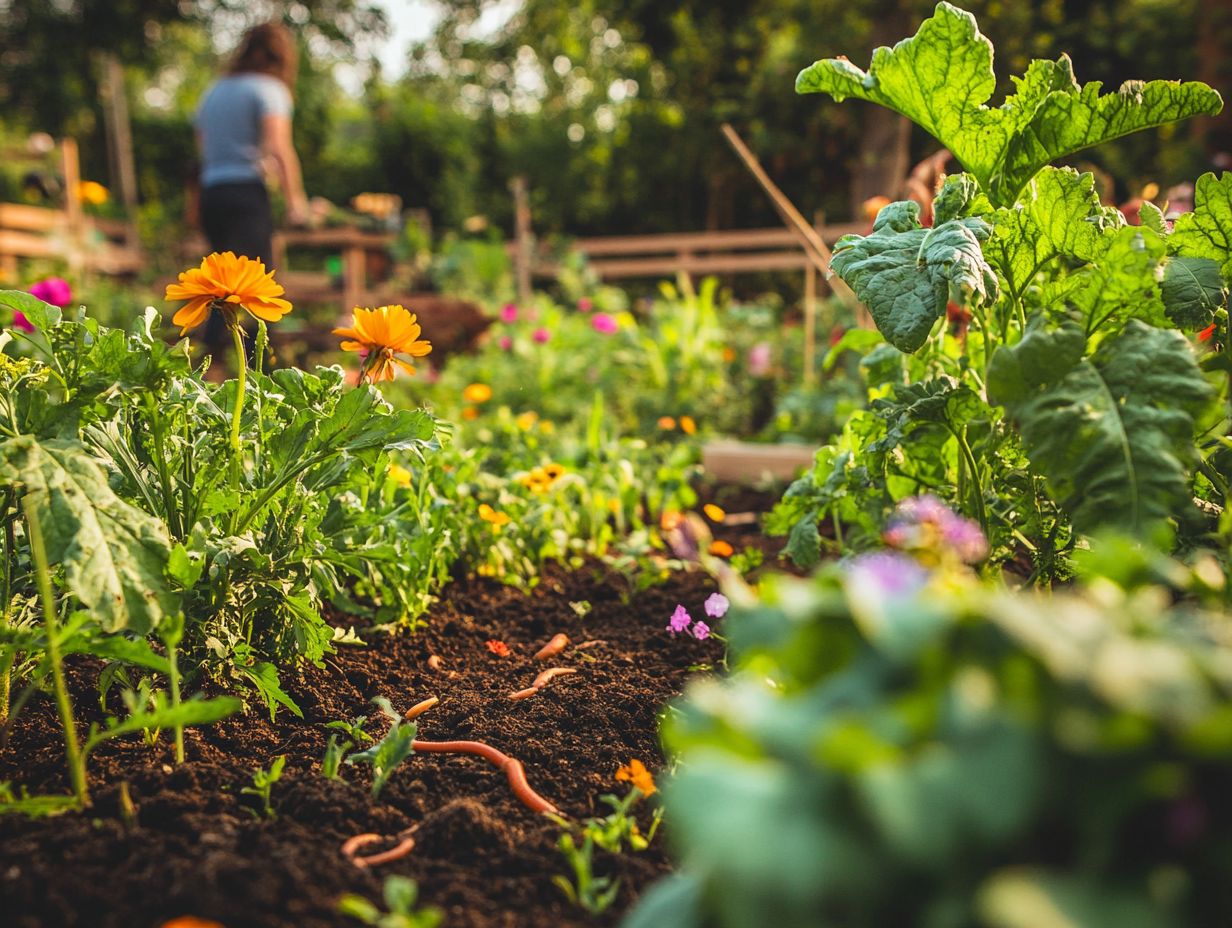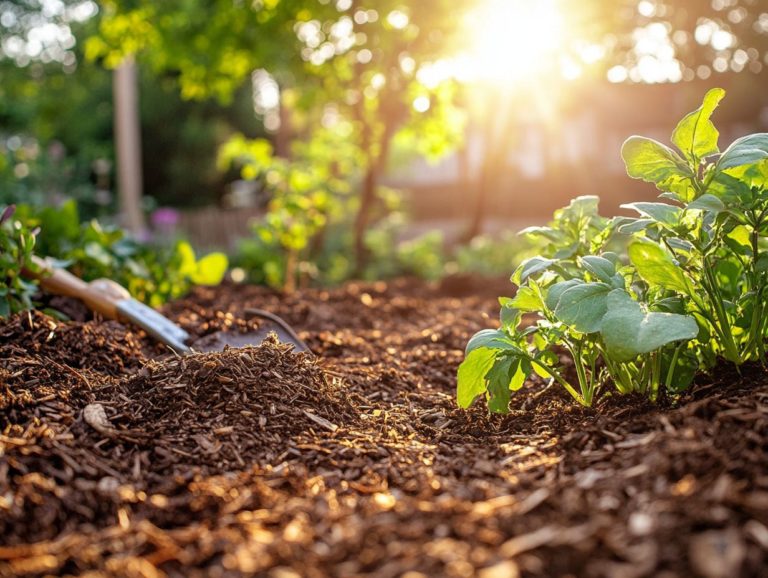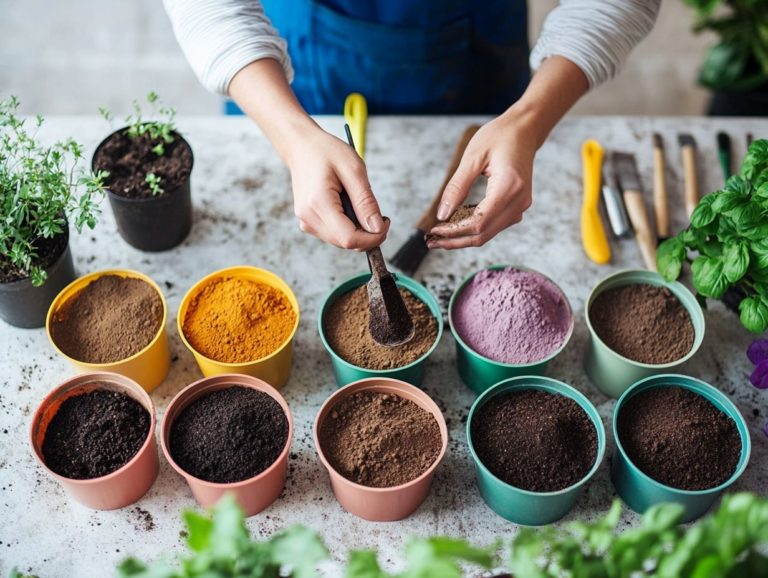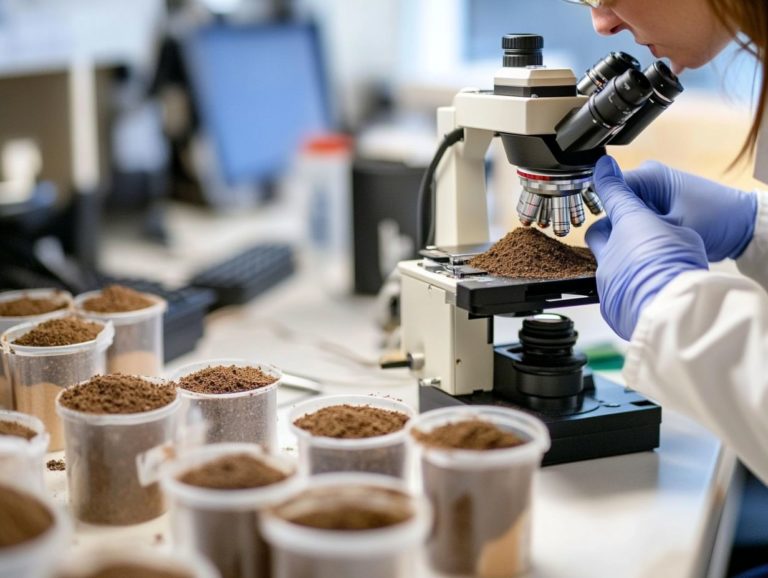The Benefits of No-Till Gardening Techniques
No-till gardening is becoming increasingly popular among eco-conscious gardeners and seasoned green thumbs, and it s easy to see why. This innovative approach not only nurtures the environment but also enhances soil health while saving you time and effort.
You ll explore the myriad benefits of no-till gardening, including its positive impact on the ecosystem and soil fertility.
A comprehensive step-by-step guide will also be provided, helping you implement these techniques effectively while dispelling common misconceptions that may be holding you back.
Discover how no-till gardening can truly transform your gardening experience.
Contents
- Key Takeaways:
- The Benefits of No-Till Gardening
- Soil Health and Fertility
- Time and Labor Savings
- Implementing No-Till Gardening Techniques
- Step-by-Step Guide
- Common Misconceptions About No-Till Gardening
- Frequently Asked Questions
- What are the benefits of no-till gardening techniques?
- How does no-till gardening improve soil health?
- Can no-till gardening help prevent erosion?
- Will using no-till gardening techniques save me time and effort?
- Are there environmental benefits to using no-till gardening techniques?
- Can no-till gardening increase crop yields?
Key Takeaways:

Here are the key takeaways to remember about no-till gardening:
- No-till gardening preserves the environment by reducing soil erosion and promoting biodiversity.
- By allowing natural decomposition and minimizing disturbance to the soil, no-till gardening improves soil health and fertility.
- Adopting no-till gardening techniques can save time and labor while still producing healthy and abundant crops.
What is No-Till Gardening?
No-till gardening is a new gardening method that minimizes soil disturbance. This elevates soil quality and structure while helping the soil and plants thrive.
By steering clear of traditional tilling practices, you can preserve the benefits of organic matter, support earthworm populations, and encourage the growth of beneficial microbes all essential for cultivating healthy plants and enriching the nutrient density of your soil.
This method is increasingly pertinent in today s agricultural landscape, aligning seamlessly with sustainable practices and addressing the challenges posed by climate change. One standout benefit is the improved soil structure, which promotes robust root growth and enhances the soil’s moisture retention. This ultimately reduces your need for frequent irrigation.
Incorporating cover crops boosts nutrient cycling and naturally suppresses weeds, fostering a rich ecosystem both above and below ground. No-till gardening not only helps you produce healthier crops but also plays a crucial role in carbon sequestration (the process of capturing carbon dioxide from the atmosphere), making it a vital practice for environmentally conscious farmers and gardeners like yourself.
The Benefits of No-Till Gardening
The benefits of no-till gardening are substantial, influencing both soil health and environmental sustainability. By incorporating soil covering techniques, this method dramatically cuts down soil erosion while enhancing moisture retention and effectively managing weed seed banks.
By embracing no-till practices, you can play a vital role in regenerative agriculture (farming practices that regenerate the soil and environment), ensuring the long-term vitality of your soil and crops.
Environmental Benefits
No-till gardening presents remarkable environmental advantages that you can harness. These include significantly reducing soil erosion and promoting carbon sequestration both enhancing the overall health of your ecosystem.
By employing cover crops, you can improve moisture retention, support beneficial insects, and ultimately cultivate healthier plants that contribute to a balanced environment.
This innovative approach minimizes disturbance to the soil, allowing it to preserve its structure and nutrients. Research indicates that no-till practices can reduce soil erosion by up to 90%, effectively safeguarding precious topsoil and preventing the loss of fertility.
Through carbon sequestration, your soil can effectively store carbon, thus mitigating the impacts of climate change. The use of cover crops retains moisture and creates habitats for beneficial insects, such as pollinators and pest predators, fostering biodiversity.
For instance, studies have shown that farms utilizing no-till methods often witness a resurgence of native bee populations, highlighting the profound interconnectedness between sustainable practices and thriving ecosystems.
Now is the perfect time to try no-till gardening techniques and experience the benefits firsthand!
Soil Health and Fertility

Soil health and fertility are crucial for your no-till gardening success. Don’t miss out on the chance to create a thriving garden!
By skipping tillage, you preserve the soil’s natural structure. This allows for better water infiltration and nutrient availability.
When you incorporate organic matter through compost and organic fertilizers, you enhance the soil microbes. This boosts nutrient density, creating an environment ripe for vigorous plant growth.
The intricate dance between organic matter, soil structure, and microbial life is vital for maintaining fertile land. Think of organic matter as a reservoir for essential nutrients. It also improves soil aeration and water retention capabilities.
As this organic material breaks down, it nurtures a thriving ecosystem of beneficial microorganisms. These microorganisms convert nutrients into forms your plants can easily absorb. In your no-till gardening journey, maintaining this delicate balance is crucial.
Regularly applying compost not only enriches your soil but also protects the microbial populations essential for overall soil health. This interconnected cycle ultimately boosts your crops’ resilience against environmental challenges, ensuring they flourish even in tough conditions.
Time and Labor Savings
One of the standout benefits of no-till gardening is the significant time and labor savings it offers. By minimizing soil disturbance, you can enjoy less physical labor and spend fewer hours on maintenance.
This efficient approach to soil management reduces wear and tear on your equipment. It also cuts down the time needed to manage the weed seed bank, which is the accumulation of weed seeds in the soil that can sprout and compete with your plants, leading to a more rewarding gardening experience.
Consider the traditional gardening methods that often demand frequent tilling, which can be both time-consuming and labor-intensive. With no-till techniques, routine tasks such as hoeing and cultivating are drastically minimized or even eliminated altogether.
This allows you to focus on the enjoyable parts planting and harvesting. No-till gardens promote healthier soil structure, meaning you ll likely spend less time watering and fertilizing, creating a more streamlined upkeep process.
As a result, you might discover that you have more time to relish your garden and experiment with a variety of crops. This ultimately enhances both your efficiency and overall yield.
Implementing No-Till Gardening Techniques
Implementing no-till gardening techniques requires a thoughtful strategy for managing soil. Highlighting the importance of cover crops and organic matter fosters a thriving soil ecosystem.
Plan and execute these techniques to unlock many benefits that come with reduced soil disturbance and enhanced soil health.
Step-by-Step Guide
A step-by-step guide to no-till gardening empowers you, whether you’re a novice or an experienced gardener, to efficiently embrace this sustainable practice.
By strategically utilizing cover crops and organic matter, you can ensure optimal soil management. This allows you to enjoy many benefits of no-till gardening while minimizing potential pitfalls.
- Soil Preparation: Start your flourishing no-till garden with thorough soil preparation. Assessing your soil health is essential; testing for pH and nutrient levels will provide the insights you need to make the right amendments before planting.
- Choosing Plants: Next, choose the right plants that enhance each other’s growth to significantly boost your yields. Consider incorporating companion plants that naturally deter pests while enriching the soil s fertility.
- Cover Crops: Utilizing cover crops like clover or vetch not only safeguards against erosion but also enriches your soil with vital organic matter when tilled back in.
- Regular Management: Regular management of this organic matter through mulching techniques and timely incorporation fosters a thriving ecosystem. This promotes beneficial microorganisms that support a more resilient garden overall.
Dive in today and transform your gardening experience!
Common Misconceptions About No-Till Gardening

Common misconceptions about no-till gardening often stem from misunderstandings about changing the soil and controlling weeds. This can lead to underestimating its effectiveness in nurturing soil health.
By addressing these myths, you can gain a deeper appreciation for the genuine benefits and practicalities of this sustainable gardening method.
Addressing Concerns and Myths
Understanding the concerns and myths surrounding no-till gardening is essential. This knowledge enhances your grasp of its principles, especially regarding soil disturbance and effective weed control.
You might worry that no-till methods could lead to compaction or poor aeration. However, research shows that no-till gardening promotes a thriving soil ecosystem, allowing beneficial microorganisms to flourish.
A study from the Rodale Institute found that no-till fields had higher organic matter and better water retention compared to conventional methods. Many community gardens demonstrate that adopting no-till practices leads to increased yields and healthier plants, even in urban settings.
As more gardeners share their positive experiences, it becomes clear that no-till techniques effectively address common soil concerns, ushering in a sustainable approach to gardening.
Frequently Asked Questions
What are the benefits of no-till gardening techniques?
No-till gardening techniques offer several benefits, including improved soil health, reduced erosion, and higher crop yields.
How does no-till gardening improve soil health?

By leaving the soil undisturbed, no-till gardening allows a diverse ecosystem to develop, leading to healthier soil with better nutrient and water retention.
Can no-till gardening help prevent erosion?
Yes! By not tilling the soil, its natural structure remains intact, preventing erosion from wind and water.
Will using no-till gardening techniques save me time and effort?
Absolutely! No-till gardening requires less physical labor and time compared to traditional methods like tilling and weeding.
Are there environmental benefits to using no-till gardening techniques?
Yes! No-till gardening reduces the need for heavy machinery, decreasing fuel consumption and air pollution. It also lowers the amount of chemical fertilizers and pesticides needed, making it a more environmentally friendly option.
Can no-till gardening increase crop yields?
Studies indicate that no-till gardening can boost crop yields by up to 20% due to healthier soil and reduced erosion, allowing for better root growth and nutrient absorption.






